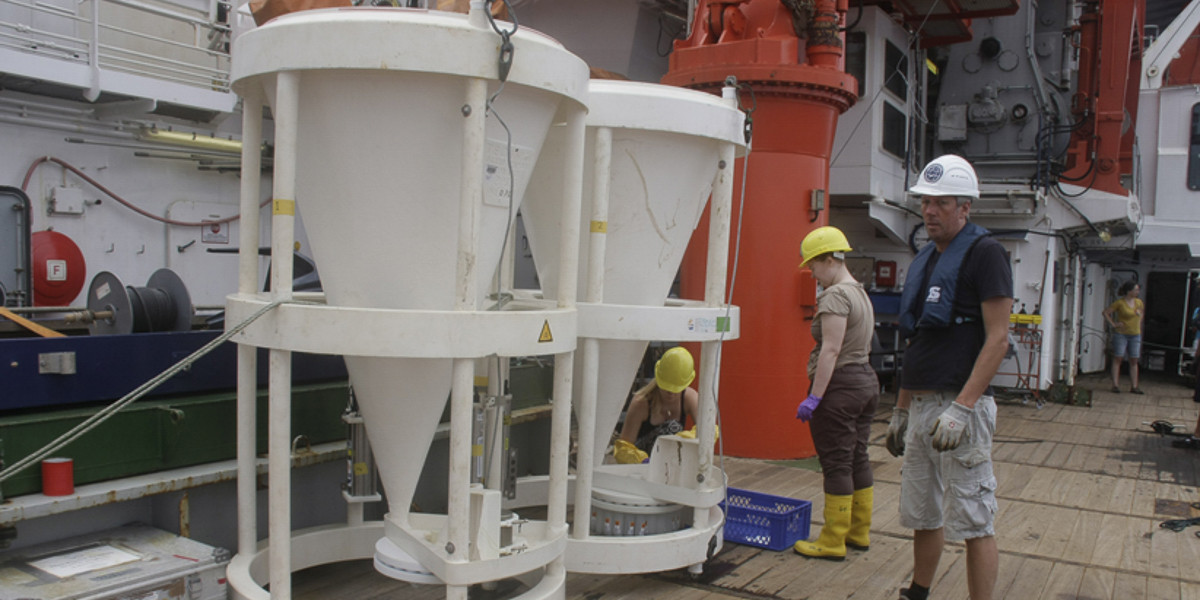TRAFFIC_Transatlantic fluxes of Saharan dust
Dust & climate
Huge amounts of dust (approximately 1.000.000.000 Ton) are blown from the Sahara into and over the Atlantic Ocean every year. This dust strongly influences global climate through blocking incoming solar radiation (cooling effect) and trapping outgoing heat reflected from the earth's surface (warming effect). Furthermore, it carries nutrients known to boost marine life, but also harmful microbes, spores, and pathogens. The net effect of cooling/warming and ocean fertilisation/poisoning is poorly understood as little data constrain dust emissions and dispersal and/or downwind changes in composition and marine deposition.

Quantifying dust fluxes
We propose to quantify the seasonal fluxes of Saharan dust and its environmental impact on carbon drawdown downwind of the world's largest desert. An array of ocean moorings will bridge the gap between long-term singular records on either side of the Atlantic; off Cape Blanc (NW Africa) since 1985, and downwind Barbados (Caribbean) since 1973.
Combined with in-situ culturing and mesocosm experiments, these unique, seasonally and spatially resolved data will yield the first Atlantic quantification of the: 1) seasonal and event variability in Saharan deposition fluxes, 2) downwind gradients in particle size/shape from Saharan source to Atlantic sink and the associated metal, nutrient, and microbial composition, 3) bio-availability of nutrients and their potential fertilisation of the photic ocean, and 4) accelerated drawdown of organic matter by dust ballasting leading to sediment burial.
In addition to remote sensing observations and transport modelling, these time-series data will allow assessing transatlantic Saharan transports, their atmospheric thermal impacts, and marine carbon-pump efficiency during climate change.
Meet the team
Linked publications
-
2017
Korte, L.F.; Brummer, G.-J. A.; van der Does, M.; Guerreiro, C.V.; Hennekam, R.; van Hateren, J.A.; Jong, D.; Munday, C.I.; Schouten, S.; Stuut, J-B W. (2017). Downward particle fluxes of biogenic matter and Saharan dust across the equatorial North Atlantic. Atmos. Chem. Phys. 17(9): 6023-6040. https://dx.doi.org/10.5194/acp-17-6023-2017
-
2016
Friese, C.A.; van der Does, M.; Merkel, U.; Iversen, M.H.; Fischer, G.; Stuut, J-B W. (2016). Environmental factors controlling the seasonal variability in particle sizedistribution of modern Saharan dust deposited off Cape Blanc. Aeolian Research 22: 165–179. dx.doi.org/10.1016/j.aeolia.2016.04.005van der Does, M.; Korte, L.F.; Munday, C.I.; Brummer, G.-J. A.; Stuut, J-B W. (2016). Particle size traces modern Saharan dust transport and deposition across the equatorial North Atlantic. Atmos. Chem. Phys. 16: 13697–13710. https://dx.doi.org/10.5194/acp-16-13697-2016